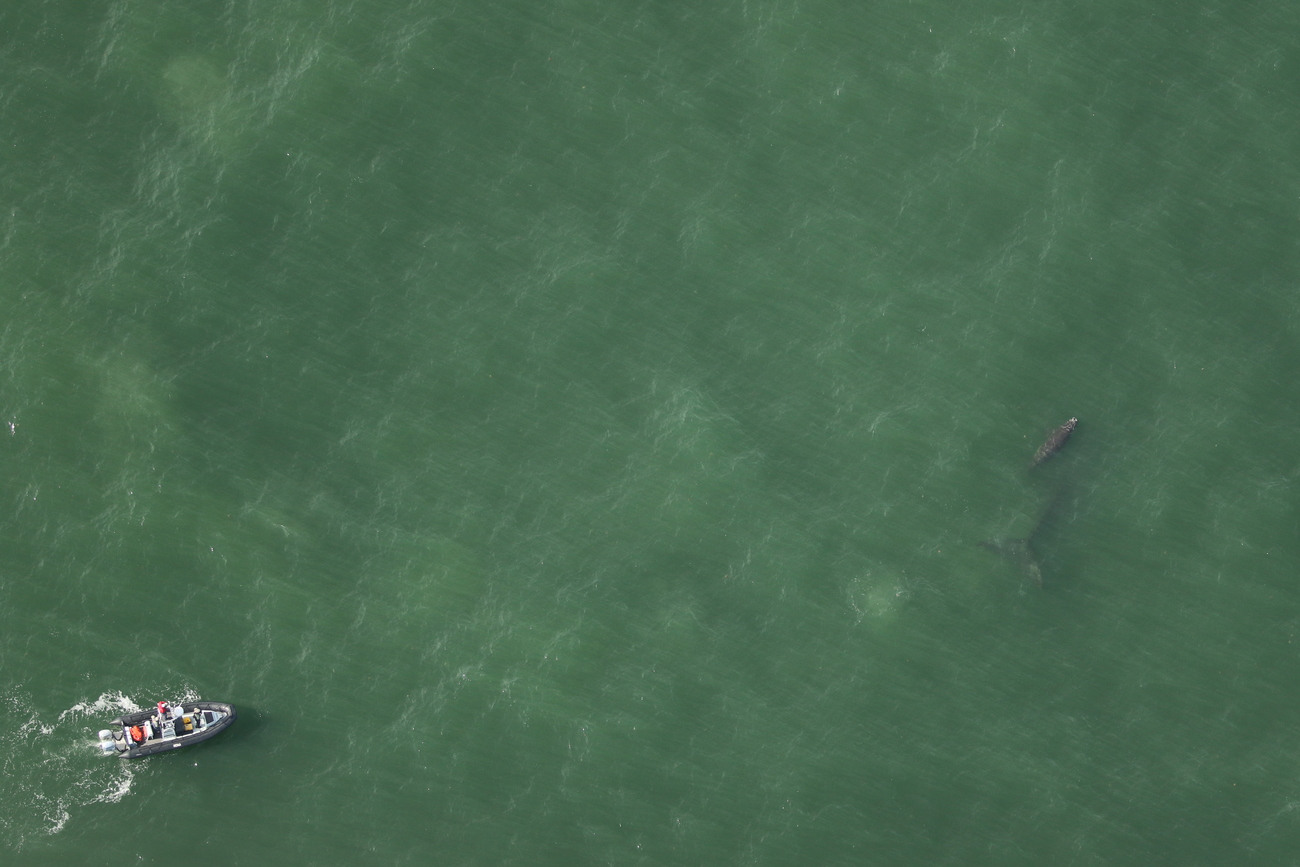the effort to save one right whale calf
the effort to save one right whale calf

On January 15, I was part of the first operation to remotely administer needed medication to an injured newborn right whale. This is typically the exciting time of year when calves are born in the southern waters off Georgia and Florida, and scientists and the public alike eagerly await news of each new calf sighting. Unfortunately, one of those happy days was marred by the fact that the first sighting of this new calf also included a report that it had already sustained injuries consistent with propeller wounds from a vessel strike. This likely occurred in the first days or even hours of its life.
And so, a team of experts, including staff from IFAW, was convened by NOAA to determine what could be done to help the calf. Obviously, the options for assisting a swimming newborn whale face numerous logistical challenges. Ultimately, the decision was made to try to get the injured calf an antibiotic injection to help it fight off infection from the injuries. Even this, though, had its challenges.
Luckily, a system had already been designed and custom-built to remotely administer drugs to injured or entangled swimming whales. The development of the system began almost two decades ago when a team of veterinarians and biologists worked with a manufacturer to design a way that would be able to efficiently deliver the large volume drugs needed for such large animals. The system could be used to temporarily sedate entangled whales to aid in disentanglement efforts or, such as in this case, to administer potentially life-saving medication.
Just a few years ago, IFAW applied for and received grant funding to acquire the existing systems in order to work with them, and to be ready to deploy and provide temporary sedation to aid in disentanglement efforts in complex scenarios where traditional disentanglement techniques are ineffective.
Once they decided that intervention was warranted and a team should deploy, things started moving very quickly. While my IFAW colleagues were booking my flight and helping me print off paperwork, I started packing up the gear.
The next morning, I had arrived to Florida and started meeting all the other members of the field team representing six different agencies. We then began running through scenarios and preparing for the response.
Unfortunately, despite multiple survey planes and vessel teams at the ready, the weather did not cooperate. Heavy fog kept the boats on the trailers and the planes grounded. But on our second day, the fog lifted and we were able to get out and search for several hours. Some right whales were seen, but not the ones we needed. On the second day, the weather continued to improve, as did the sighting (and darting) conditions, and the team was fortunate enough to spot some right whales off in the distance not long after leaving the dock. Not wanting to get too close, we contacted one of the aerial teams to come in and check them out. With a little radio delay, we finally heard those words, "Those are our whales.” Amazing that the first and only whales we saw that day are the ones we needed!
We hung back away from the pair and began prepping our equipment while the on-site veterinarian assessed the calf’s condition prior to making the final determination to deploy. In this situation, we are balancing emotions of amazement that we even found the calf again, urgency to get everything ready, and excitement at the prospect of being successful in accomplishing our goal.
Once everything was ready and everyone in position, we began our approach, one of the most hazardous steps in this operation. We needed to be close enough and in the right position to dart the calf, but we also needed to keep an eye on where the mother was and make sure both of them stayed safe, along with all those on the boats. Thankfully, our boat driver was very experienced operating around whales, even mom/calf right whales, and skillfully got us into position. This was especially critical as the dart itself would have to hit the desired location on the calf’s body—around the mid-flank of the dorsum—as this dart was designed as an intra-muscular injection. Although it took some time for the boat and whale to be in about the right position, it then all aligned during one quick surfacing when we were able to successfully deploy the dart and administer the potentially life-saving medication. This was the first time since the darting system was developed that this custom-made, remote drug-delivery device had been used on a right whale calf. I think everyone took a really deep breath after that moment.
We recovered the dart and the boats fell back to give the mom and calf some space, though still keeping an eye on them to monitor for a while. After so much practicing and planning, I was equally relieved and happy that the deployment was successful and the entire operation had gone so well.
While this calf’s prognosis is still poor, it was an amazing effort by many people to help this calf and give it a better chance at surviving those injuries. Perhaps its only chance—but we’ll have to wait and see.
-Kathryn Rose, Animal Rescue Officer, Research Coordinator
Related content
Every problem has a solution, every solution needs support.
The problems we face are urgent, complicated, and resistant to change. Real solutions demand creativity, hard work and involvement from people like you.